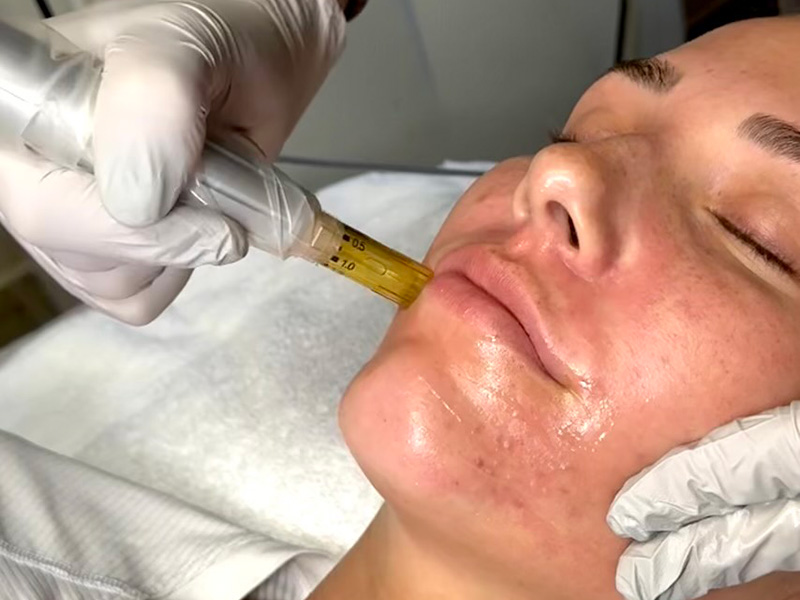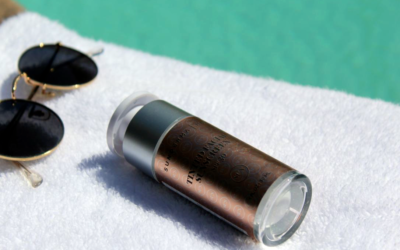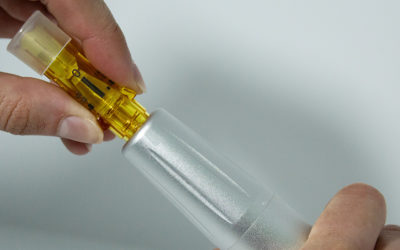At-Home vs Professional Microneedling : Compared
Over the past decade, the landscape of microneedling has undergone a significant transformation, witnessing a remarkable surge in popularity and influence. This surge extends its reach across both the health and wellness sector, as well as the commercial market targeting at-home consumers. The ongoing evolution of technology, tools, and advancements in microneedling has resulted in a multitude of products flooding the market.
However, the saturation of offerings presents a challenge for consumers, making it difficult to discern which products truly offer tangible benefits and which ones might harbor potential risks. This scenario prompts a crucial question: How can we effectively evaluate and determine the efficacy of microneedling products and services in such a crowded market?
At-Home vs Professional: Who Should You Trust with Your Skin?
In today’s day and age, information, goods, and services are all at our fingertips — making it easier than ever for the average consumer to purchase products without any prior knowledge or training. For many day to day practices such as painting our nails or home upgrades, a DIY can save the day, but when it comes to skin the smallest error can turn into permanent skin damage.
Microneedling dates back to Ancient Chinese medicine practices circa 100 BC, with evidence of microneedling-like procedures being used to allow energy to flow throughout the body by opening new channels. These practices continued to develop over time resulting in devices such as derma rollers or derma stamps.
Many of these devices have become commercially available to the average consumer, seemingly making it easier than ever to achieve the amazing results of microneedling at a fraction of the cost. On the surface, these devices seem like a dream come true, promising to provide you with the same results as professional microneedling procedures at an extremely affordable price point- but when you begin to dig deeper, concerns surrounding these practices begin to arise.
The Rise and Risks of At-Home Microneedling
Within the realm of at-home microneedling, the widely embraced method is derma rolling, employing a specialized tool known as a derma roller. These tools, available in diverse shapes and sizes, share a common cylindrical drum design. They feature needles ranging from 0.1 to 0.25mm in diameter and 0.5mm to 3.0mm in length, covering the entire roller surface. Another popular option in the “at-home microneedling” category involves devices resembling the Dermapen® but lacking the stringent rules, regulations, and protective measures in place to ensure patient safety and favorable outcomes.
Understanding the intricate composition of our skin—comprising the epidermis, dermis, and subcutaneous tissue, along with the distinct depth of each layer—is essential. The use of unregulated devices like dermarollers or imitation devices may lead to inaccurate needle depths, gauges, and speeds, resulting in lasting damage to the skin.
Moreover, the utilization of a dermaroller introduces a “scooping” and “rolling” mechanism, causing larger injuries as each needle is extracted at an angle during the device’s traversal of the treatment area. It is imperative to prioritize regulated and precise microneedling practices to safeguard skin health and achieve optimal outcomes. Beyond inaccurate microneedling practices, additional dangers for at-home microneedling include the incorrect use of serums/topicals and improper treatment frequency, which can also cause irreversible damage.
When it comes to skin care, especially facial skin, the utmost care and precision are required making it not only crucial to find a provider equipped to effectively treat your skin concerns but to also find a provider that employs quality products and devices during procedures.
The Case for Professional Care
Enter Dermapen® — the most advanced microneedling system available to skincare professionals. Dermapen® offers a diverse range of possibilities in treatments, with a corded design ensuring consistent power flow throughout the treatment.
Additionally, SurSpace™ and SafLok™ technologies are incorporated to prevent cross-contamination and backflow, consistently delivering the best results in the microneedling industry. Every Certified Dermapen® provider is not only trained but also equipped to address patient skin concerns and any device-related queries.
As microneedling continues to gain popularity, the influx of products demands careful consideration by consumers. Unregulated at-home devices, such as derma rollers, may pose risks to skin health, emphasizing the importance of prioritizing regulated practices and seeking qualified providers for optimal results. The complexities surrounding microneedling underscore the need for a well-informed and cautious approach in navigating the crowded market to ensure the best outcomes for skin health.



